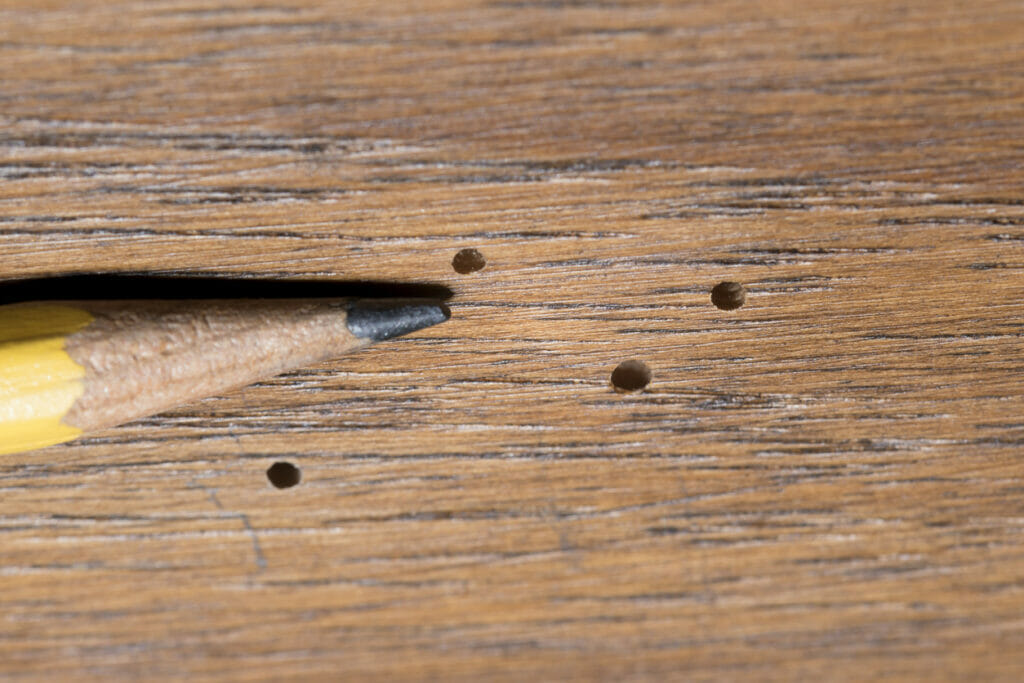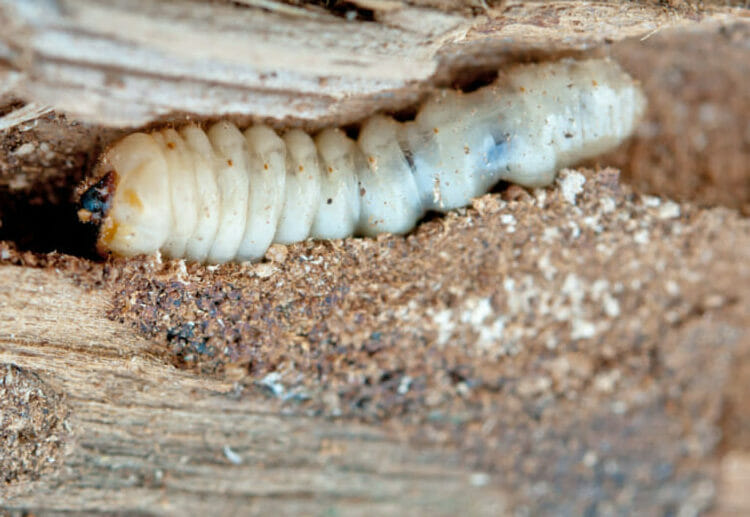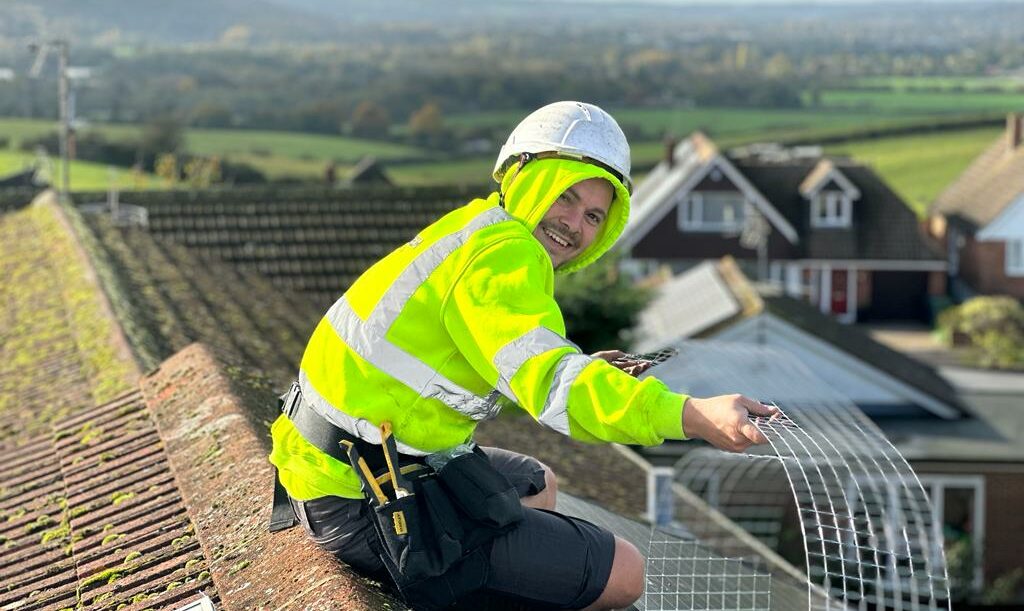Professional Woodworm Control in London
If you suspect you may have a woodworm infestation, it is crucial to speak to our team straight away, as wood boring beetles result in major structural damage and put buildings at risk of collapse.
Our woodworm specialists operate throughout London, and the southeast and have built up a range of treatment techniques effective in controlling woodworm. We’re so confident that if all our woodworm treatment advice is implemented, we’ll offer you a 30-year guarantee.
Specialist woodworm insecticide application
ULV insecticide fogging treatment
We can undertake treatments in just one day (building size dependent)
RSPH level 2 and BPCA certified specialists
Our Wood Worm Control Process
Our surveys uncover all the information we need to give a 30-year guaranteed treatment price. We identify the beetle species, the infested areas and the necessary plan to control woodworm.
Our treatment methods include three leading solutions, a specialist woodworm insecticide application, ULV fogging treatment and fumigation. Unfortunately, we cannot say which treatment technique is correct for your property without a survey; sometimes, we use a combination. Other times, a single method is enough to eradicate the problem.
holes in your timber or wood structure can indicate that woodworm is present in your home. However, it’s important to note; cavities are caused at the end of the woodworm lifecycle, so the infestation may spread further than what is visible to an untrained eye. Call us on 0204 566 5522, email [email protected] or open our live chat to discuss your woodworm problem.
After a brief discussion, we’ll arrange to visit your home to identify just how deep the infestation goes. We will also recommend the best woodworm treatment to guarantee that the infestation is eradicated.
Once you’ve agreed on the cost of our woodworm treatment in London, we’ll visit your property to carry out the removal process. Our typical treatments take one day. However, this can change depending on the size of the building and infestation.
If you’ve followed our guaranteed treatment recommendations, we’ll be available for long-term aftercare to offer prevention advice.

Types of Woodworm
Woodworm is the common name for a variety of different wood boring beetles. But, no matter which woodworm species is causing you issues, you probably started by noticing holes in the wood in your home. If this is the case, it is more than likely you have one of the following species infesting your home:
- Common Furniture Beetle (Anobium punctatum)
- House Longhorn Beetle (Hylotrupes bajulus)
- Deathwatch Beetle (Xestobium rufovillosum)
- Wood Boring Weevil (Pentarthrum huttoni and Euophryum confine)
- Powderpost Beetle (Lyctus brunneus)
Our specialist team will identify which species of woodworm is present at your property during your home visit. Although it is good to know which species is causing problems, the most crucial aspect is to act straight away as the woodworm treatment cost in London is minuscule compared to the structural and financial damage caused by these beetles.
More than likely, you’ll have the ordinary furniture beetle on your property. In the UK, timber and heavy wood homes become infested when these beetles bore into the wood while in the larval stage. The larval feeds on wood until it reaches adult maturity, so infested properties often see holes in wood and timber structures at the end of the beetle’s lifecycle.
Frequently Asked Questions
Still need help? Contact us
How quickly can woodworm spread?
Woodworm spreads very slowly, and it is hard to know you have an infestation until the beetle’s lifecycle is complete. The complete lifecycle ranges from anywhere between two to five years. Even though the lifecycle is lengthy, you should act as soon you notice holes appearing in wood to stop further expansion of the infestation.
To understand this question fully, you need to understand the lifecycle of a woodworm.
What is the best treatment for woodworm?
Our experience carrying out professional wood-boring treatments has led us to recommend combining the following techniques to guarantee infestation removal. A surface treatment containing a woodworm insecticide application and a ULV fogging treatment produces the best results.
Can I treat woodworm myself?
It is possible to treat woodworm yourself. However, you will come across some difficulties with DIY solutions. For example, professional woodworm killers are often only available with certification from regulated suppliers. Due to this, chemicals and equipment bought in DIY shops are often subpar at eradicating the problem.
Furthermore, woodworm specialists will take the time to identify the stage of life, activity and the extent of the infestation. Thus, resulting in a thorough treatment across the whole property and ultimately stopping the infestation from reappearing. We would only recommend completing a woodworm treatment yourself if the infestation is small, located in a desk or chair.
How do you tell if you have woodworm?
Unfortunately, due to the length of time woodworm stay bored into the wood, it is hard to know you have woodworm until it is too late. However, you can tell if you have woodworm as you may see live insect sightings during May and August. In the past we have had customers complaining of a woodworm infestation, only to turn up and realise it was actually a cockroach infestation. Furthermore, you’ll notice boreholes and sawdust damage caused by these insects.















